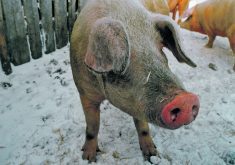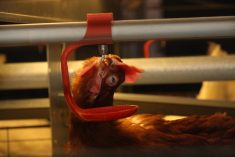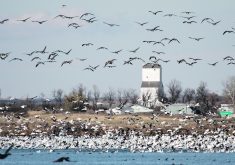Alberta has seen more than one million birds affected this season, almost twice the number seen in Ontario
Avian influenza continues to affect chicken farms in Alberta.
The latest case was identified Aug. 31 in a commercial operation in Sturgeon County. Now producers brace for a possible return of the virus with the fall migration of wild birds.
Despite not having a single case of bird flu since it was first reported in Canada in 2004, Alberta was the hardest hit province in this year’s outbreak with nearly a million birds impacted in commercial operations and backyard flocks.
Nearly one million farmyard birds on more than 30 operations have been affected in Alberta alone in 2022 with Ontario falling a distant second with 560,000 birds affected on 26 farms.
Read Also

Huge Black Sea flax crop to provide stiff competition
Russia and Kazakhstan harvested huge flax crops and will be providing stiff competition in China and the EU.
The cause of the spread across North America this year is being blamed on migratory bird patterns, which is giving rise to fears of a return of the bird flu as wild fowl start heading south.
Karen Kirkwood, Alberta Chicken Producers executive director, said the group has been preparing for the introduction of avian flu in Alberta since it first hit Canada and was able to put that preparedness to good use so far this year.
“While we don’t know what the level of risk the migration will present going forward, there is no doubt that the recent cases that we’ve had in Alberta emphasizeis that there is a persistent risk,” said Kirkwood, adding the fall migration is now underway.
She said chicken producers must remain vigilant especially with the fall migration overlapping with harvest times and equipment being moved between farms.
Kirkwood said producers should be aware of operating around areas where migrating birds congregate.
Studies are ongoing to better understand the virus and its relationship to shifting migratory patterns. Kirkwood said it is imperative to get that data and dissect the reasons for the severity of this year’s outbreak.
She added that contingency planning has worked well for chicken producers.
“We cancertainly tweak our resources that we have for producers. We are better positioned as an industry to be able to quickly and swiftly step in during an outbreak because we understand how we plug into the CFIA structure.”
Kirkwood said that relationship with the Canadian Food Inspection Agency has worked well.
“Where we have identified some of the challenges is at that policy level and those are national issues,” she said.
Specifically, those policy issues include how avian flu affects export markets as well as reporting regulations involving the International Organization for Animal Health.
In total, a little more than two million domestic birds have been impacted from this year’s outbreak since the spring with all provinces except for Prince Edward Island reporting cases.


















